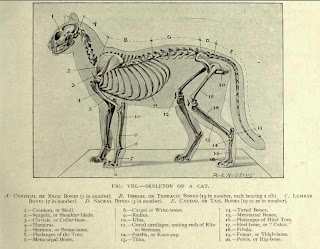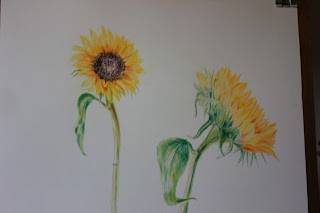Ben Nicholson
(For the purpose of information in this research I am indebted to Norbert Lynton for his book titled Ben Nicholson, published by Phaidon and to Jeremy Lewison for his book of the same title published by Ediciones Poligrafa SA).
Why does he simplify still life forms and negative space and superimpose them on the Cornish landscape?
Ben Nicholson was the son of William Nicholson and Mabel Nicholson (nee Pryde). This start to Ben Nicholson's life, (hereinafter abbreviated to BN), has more than a small effect on his life and artistic work. Both parents were artists, and his father's collected objects for still life works of his own; objects that BN not only grew up with but also inherited and used in his own work.
This is not to say that BN worked in a similar style to his father, far from it. In fact by the time BN was born an artistic world was being created in which a campaign was being mounted urging simplification in drawing. Tonks at the Slade was in favour of this and although BN was not long studying there under Tonks his work shows this influence in being less detailed.
Still lifes with scenes beyond windows were important in BN's work throughout his life and Lynton makes mention of the long tradition in Art of views outside windows as part of secular and religious paintings. Interestingly, although there are differences in BN's landscapes of the 1920's the picture space shows the traditional recession whilst the still lifes explore the flat plane of the Cubists.
Lynton goes on to argue that while landscapes have their own light still lifes have their own light although possibly artificially arranged so that the two genres can be seen as complementary.
Having been married to Winifred Nicholson, also a painter, BN later formed a relationship with Barbara Hepworth and the 1930's were to be important for BN in many ways. It seems that the work of this period combined BN's reliefs as well as painting. The abstract reliefs convey a formal white purity that may demonstrate an adoption of Modernist trends and personally I do find these stark works especially satisfying. Later, BN said that these works were basic still lifes, the cut out circles representing a cup, the rectangle a bread board, a newspaper, a table top and so on. This fusion of abstract relief, apparently adapted from Mondrian, with still life show that BN was being experimental and would so continue and paves the way for further fusion of landscape with abstract relief.
'Au Chat Botte' is considered to be another important development in BN's art.
Apparently whilst looking into the window of this cafe BN became aware of the three different planes of space that were simultaneously located onto the one plane. In other words he could see the objects inside the cafe, the writing on the glass as well as the reflection of the things behind him. BN said it was impossible to see what was real and what was unreal and that this created some kind of space or imaginative world in which one could live. This led to the painting above and it's possible to see the potential that this, with the aforementioned relief work, could have on some of BN's subsequent works.
St Ives Version 2 (oil and pencil on board)
In this work the cup and mug are shown in line and shadow recalling the reliefs combined with the simplified Cornish scenery beyond. Again, according to Lynton what BN enjoyed enormously in St Ives was the quality of the light, at one point in his life he had thanked Winifred for the luminosity of her work and now the light and landscape of Cornwall were again part of his life and one that he seems to have enjoyed immensely, even spiritually. Lynton says of this work:
'Apart from the motif and space game of the double subject there is, more vigorously than ever before the play of line against plane, pencil against paint.' And adds how much difference there is between the lines and the fatness of the grey cloud.
St Ives, version 2 was completed in 1940 and compares to Trendine (1947) and Mousehole (1947) in that all three are fusions of still life and landscape. However they differ in that in the latter there is not the clear distinction between the background and foreground objects as there is in St Ives.
Mousehole 1947
This is quite apparent in the work above and the still life objects look imposed onto the background scenery. Colour of palette unite the two but there is more confrontation here between the two genres
During the 1940s BN continued to complete work that shows sharp lines and soft tones with flat surfaces, apparently he described his own work as 'both musical and architectural'.
December- St Ives oval and steeple 1951
Looking closely at this work it's far more allied than confrontational - the soft grey blue tones and the pencil lines work their way across the whole picture and rather than being set against a window the familiar rectangles of the reliefs and earlier paintings are in evidence. I like this work immensely, to me this picture is calming and yet lively at the same time.
Another work I really like is this:
1955 Torre del Grillo, Rome- Pencil and wash
This depicts fruit and urns together with a balustrade and buildings with a wash of soft ochre.
Continuing to pare down his details Lynton argues that 'clarity and the great art of omission' are key to BN. 'A few lines can offer space, light and scale.' BN mentioned at one time that he found Mu-Chi's work to be most poetic.
Six Persimmons
It's certainly easy to see the economy used in this picture. But beyond that BN had a great love of landscape and said that the sky is not up there above us but rather it 'comes in and out of one's windows'.
He also is quoted as saying that rather than denying that anyone had influenced him he was willing to admit that he had been influenced by many people. And it's true that when reading about the life and work of BN so many important names from the history of art are encountered. In this short exploration of BN, I came across, and this is apart from his parents and wives, the names of Paul Klee, Cezanne, Picasso, Miro, Paul Nash, Kit Wood and not least, perhaps Alfred Wallis in Cornwall.
It's hard not to like BN when reading about him; his statement that an artist should make an object as 'living and as good as a poodle' and that art should be an 'active force in our lives'.
It seems he was born into not only a family of artists but at a major time in the history of art. So overall it's impossible in answering this question about BN's work to simplify, as he did in his work, an answer. Clearly his work developed as a result of several personal influences, his love of spiritual life and the era into which he was born which seems to have been one of great innovation in Art.































--julie-in-still-life-context-(at-mac)-%5B1%5D.jpg)



--father---sunday-papers-%5B1%5D.jpg)



